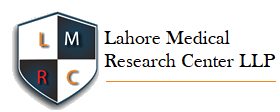Teratogenic Effects of Lead in the Developing Chick Embryos
Teratogenic Effects of Lead in the Developing Chick Embryos
DOI:
https://doi.org/10.54393/mjz.v4i01.63Keywords:
Micromelia, Amelia, Embryotoxicity, Microcephaly, Teratogenicity, Bioaccumulation, BiomagnificationAbstract
Lead (heavy metal) can be found in trace levels in the crust of the planet. It may be harmful to both human and animals' health. Nearly all body's organs and systems can be affected by lead and mainly found in smelting and mining areas. Objective: To estimate the effect of lead on chick embryos at morphologic, morphometric, and histological levels and to study the toxic effects of lead in developing chick embryos Methods: Fertilized eggs were separated into three groups. Two groups were treated with varying concentrations of lead as experimental groups, untreated designated as control group. The dose was administered on the fourth day of incubation, and recovery occurred on the ninth day. Results: Significant differences (p<0.000) and (p<0.001) in CR length, body weight, head size, eye circumference, forelimb and hindlimb were reported. Morphological abnormalities such as hydrocephaly, microcephaly, beak shortening, agenesis, Amelia, micromelia, anophthalmia, microphthalmia, and kyphosis were seen. It also revealed various abnormalities in important organs such as irregular cerebral folia, necrotic intestine, and hemorrhages in bursa fabricious. Lead has been shown in various combinations to cause embryotoxicity and teratological effects in chick embryos. Conclusions: Lead is a harmful pollutant and may be responsible for various developmental anomalies in livings beings including animals and humans.
References
Tchounwou PB, Yedjou CG, Patlolla AK, Sutton DJ. Heavy metal toxicity and the environment. Molecular, clinical and environmental toxicology. environmental toxicology. 2012 Jan; 3 133-64. doi: 10.1007/978-3-7643-8340-4_6.
Hussain S, Ali S, Mumtaz S, Shakir HA, Ahmad F, Tahir HM, et al. Dose and duration-dependent toxicological evaluation of lead acetate in chicks. Environmental Science and Pollution Research. 2020 May; 27: 15149-64. doi: 10.1007/s11356-020-08016-8.
Dicke JM. Teratology: principles and practice. Medical Clinics of North America. 1989 May; 73(3): 567-82. doi: 10.1016/S0025-7125(16)30658-7.
Harrison R. Lead pollution: causes and control. Springer Science & Business Media; 2012 Dec. doi: 10.1007/978-1-4615-9705-6_1.
Greenwood NN and Earnshaw A. Chapter 5. Beryllium, Magnesium, Calcium, Strontium, Barium and Radium. Chemistry of the Elements. Elsevier. 2012: 107-38.
Abadin H, Ashizawa A, Stevens YW, Llados F, Diamond G, Sage G, et al. Toxicological Profile for Lead. Atlanta (GA): Agency for Toxic Substances and Disease Registry (US); 2007 Aug.
Mukai H, Furuta N, Fujii T, Ambe Y, Sakamoto K, Hashimoto Y. Characterization of sources of lead in the urban air of Asia using ratios of stable lead isotopes. Environmental Science & Technology. 1993 Jul; 27(7): 1347-56. doi: 10.1021/es00044a009.
Getz LL, Best LB, Prather M. Lead in urban and rural song birds. Environmental Pollution (1970). 1977 Mar; 12(3): 235-8. doi: 10.1016/0013-9327(77)90058-1.
Gloag D. Sources of lead pollution. British medical journal (Clinical research ed.). 1981 Jan; 282(6257): 41. doi: 10.1136%2Fbmj.282.6257.41
Ul Haq N, Arain MA, Badar N, Rasheed M, Haque Z. Drinking water: a major source of lead exposure in Karachi, Pakistan. EMHJ-Eastern Mediterranean Health Journal. 2011 Mar; 17 (11): 882-886. doi: 10.26719/2011.17.11.882.
Beauchemin S, MacLean LC, Rasmussen PE. Lead speciation in indoor dust: a case study to assess old paint contribution in a Canadian urban house. Environmental Geochemistry and Health. 2011 Aug; 33: 343-52. doi: 10.1007/s10653-011-9380-8.
Hayes AW, Kruger CL, editors. Hayes' principles and methods of toxicology. Crc Press. 2014 Oct. doi: 10.1201/b17359.
Ansarihadipour H and Bayatiani M. Influence of electromagnetic fields on lead toxicity: a study of conformational changes in human blood proteins. Iranian Red Crescent Medical Journal. 2016 Jul; 18(7): e28050. doi: 10.5812%2Fircmj.28050.
Yang SH, Shin DH, Baek WK. Apoptosis of Neuronal Cells Induced by Lead. Korean Journal of Occupational and Environmental Medicine. 1999 Jun; 11(2): 254-63. doi: 10.35371/kjoem.1999.11.2.254
Cleveland LM, Minter ML, Cobb KA, Scott AA, German VF. Lead hazards for pregnant women and children: part 1: immigrants and the poor shoulder most of the burden of lead exposure in this country. Part 1 of a two-part article details how exposure happens, whom it affects, and the harm it can do. AJN The American Journal of Nursing. 2008 Oct; 108(10): 40-9. doi: 10.1097/01.NAJ.0000337736.76730.66
Flora G, Gupta D, Tiwari A. Toxicity of lead: a review with recent updates. Interdisciplinary toxicology. 2012 Jun; 5(2): 47-58. doi: 10.2478/v10102-012-0009-2.
Pounds JG. Effect of lead intoxication on calcium homeostasis and calcium-mediated cell function: a review. Neurotoxicology. 1984 Jan; 5(3): 295-331.
Smith HD, King LR, Margolin EG. Treatment of Lead Encephalopathy: The Combined Use of Edetate and Hemodialysis. American Journal of Diseases of Children. 1965 Apr; 109(4): 322-4. doi: 10.1001/archpedi.1965.02090020324011.
Emmerson BT. The renal excretion of urate in chronic lead nephropathy. Australasian Annals of Medicine. 1965 Nov; 14(4): 295-303. doi: 10.1111/imj.1965.14.4.295.
Senapati AK, Mishra PC, Routra BC, Biswas A. An extensive literature review on lead time reduction in inventory control. International Journal of Engineering and Advanced Technology (IJEAT). 2012 Aug; 1(6): 104-5.
Bradberry S and Vale A. Dimercaptosuccinic acid (succimer; DMSA) in inorganic lead poisoning. Clinical Toxicology. 2009 Aug; 47(7): 617-31. doi: 10.1080/15563650903174828.
Dawn L and Whited L. Dimercaprol. In StatPearls. StatPearls Publishing. 2019. doi: 10.31003/USPNF_M26450_01_02.
Burger J. A risk assessment for lead in birds. Journal of Toxicology and Environmental Health, Part A Current Issues. 1995 Aug; 45(4): 369-96. doi: 10.1080/15287399509532003.
Gerber GB, Leonard A, Jacquet P. Toxicity, mutagenicity and teratogenicity of lead. Mutation Research/Reviews in Genetic Toxicology. 1980 Sep; 76(2): 115-41. doi: 10.1016/0165-1110(80)90006-8
da Costa MC, Kmecick M, de Freitas PF, Ortolani-Machado CF. Lead exposure affects cephalic morphogenesis and neural crest cells in Gallus gallus embryo. Neurotoxicology and Teratology. 2021 Mar; 84: 106948. doi: 10.1016/j.ntt.2021.106948
Gilani SH. Congenital cardiac anomalies in lead poisoning. Pathobiology. 1973 Oct; 39(2): 85-90. doi: 10.1159/000162634.
Catizone O and Gray P. Experiments on chemical interference with the early morphogenesis of the chick. II. The effects of lead on the central nervous system. Journal of Experimental Zoology. 1941 Jun; 87(1): 71-83. doi: 10.1002/jez.1400870106.
De Gennaro LD. The effects of lead nitrate on the central nervous system of the chick embryo I. Observations of light and electron microscopy. Growth. 1978 Jun; 42(2): 141-55.
Hammett FS and Wallace VL. Studies in the biology of metals: VII. The Influence of Lead on the Development of the Chick Embryo. The Journal of experimental medicine. 1928 Nov; 48(5): 659-65. doi: 10.1084/jem.48.5.659.
McClain RM and Becker BA. Teratogenicity, fetal toxicity, and placental transfer of lead nitrate in rats. Toxicology and Applied Pharmacology. 1975 Jan; 31(1): 72-82. doi: 10.1016/0041-008X(75)90053-8.
Kruckenberg SM. Microtus ochrogaster as a model for experimental teratology. Kansas State University. ProQuest Dissertations Publishing. 1972.
Wallhäusser E and Scheich H. Auditory imprinting leads to differential 2-deoxyglucose uptake and dendritic spine loss in the chick rostral forebrain. Developmental Brain Research. 1987 Jan; 31(1): 29-44. doi: 10.1016/0165-3806(87)90080-0.
Downloads
Published
How to Cite
Issue
Section
License
Copyright (c) 2023 MARKHOR (The Journal of Zoology)

This work is licensed under a Creative Commons Attribution 4.0 International License.
This is an open-access journal and all the published articles / items are distributed under the terms of the Creative Commons Attribution License, which permits unrestricted use, distribution, and reproduction in any medium, provided the original author and source are credited. For comments editor@markhorjournal.com











